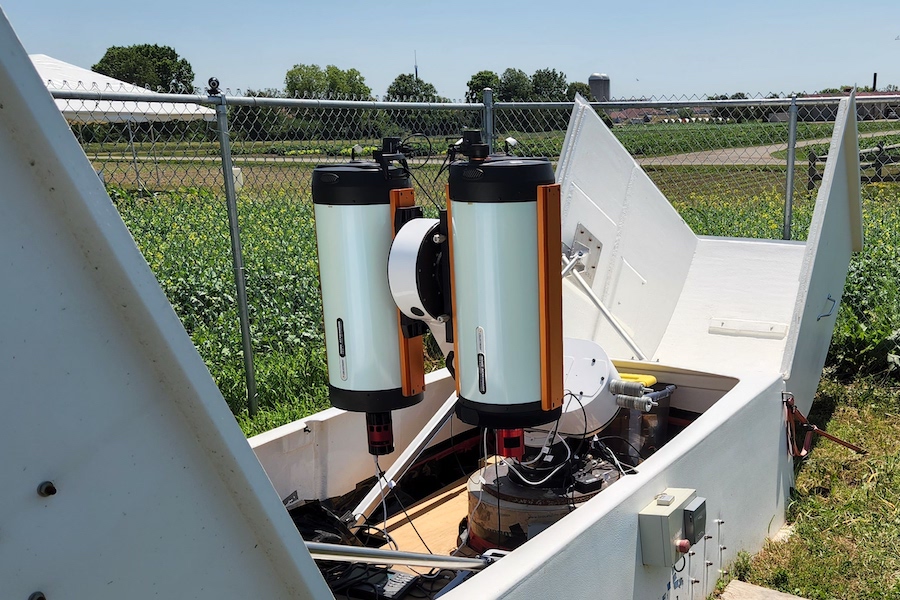
A team led by University of Minnesota researchers and undergraduate students is constructing two sets of extremely fast telescopes that will enable more detailed studying of gravitational waves and light created by colliding black holes and neutron stars. The telescopes will be able to scan the sky more than 10 times faster than the average telescope.
The three-year Total-Coverage Ultra-Fast Response to Binary-Mergers Observatory (TURBO) project is funded by a $1 million grant from the National Science Foundation. Once built, the telescopes will be placed at two sites: the Magdalena Ridge Observatory in New Mexico and the Skinakas Observatory in Greece.
“With its novel fast response and two vantage points on the sky, TURBO will open up a new frontier for studying objects in the sky that change in brightness,” said Patrick Kelly, the lead project investigator and an assistant professor in the College of Science and Engineering.
Both gravitational waves — which can be thought of as “ripples” in spacetime — and light provide different information about cataclysmic events. The combination of gravitational waves and light emitted from colliding black holes and neutron stars can help researchers understand how gold and other heavy elements may be produced and it can be used to calculate the expansion rate of the Universe.
While current telescopes might take between several minutes to an hour to get images of the area where a merger has occurred, the TURBO telescopes can get an image of the same area in about two seconds.
The U of M team also hopes the telescopes will allow them to discover supernova explosions within a minute of them exploding — or right when the light reaches the Earth — a feat that hasn’t been done before.
“What I’m most excited for is to be able to find these neutron star mergers quickly,” said Daniel Warshofsky, a Ph.D. student in the College of Science and Engineering. “A lot of times people think of space and astronomy as very big things that happen over long periods of time, but the things that we’re looking for happen on the scale of seconds to minutes to hours, so it’s really important to catch this stuff early."
While the research team spans universities across the country, most of the prototype building has been done by U of M students.
“This project provides a really good opportunity to work with top-of-the-line hardware, get access to real-world data and be able to apply all of the theoretical things I’ve learned in classes,” said Matthew Tran, an undergraduate student studying computer science.
-30-
About the College of Science and Engineering
The University of Minnesota College of Science and Engineering brings together the University’s programs in engineering, physical sciences, mathematics and computer science into one college. The college is ranked among the top academic programs in the country and includes 12 academic departments offering a wide range of degree programs at the baccalaureate, master's, and doctoral levels. Learn more at cse.umn.edu.
- Categories:
- Science and Technology
- Science





